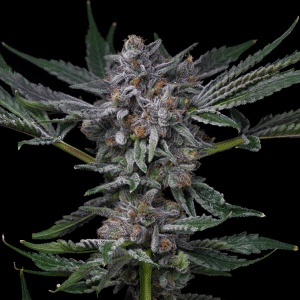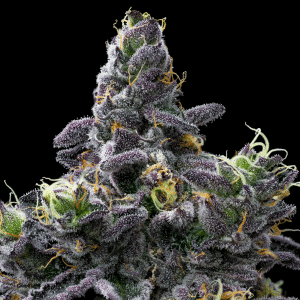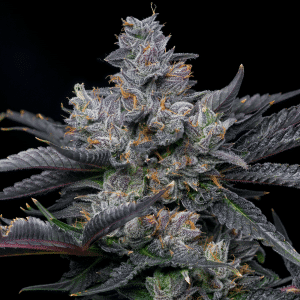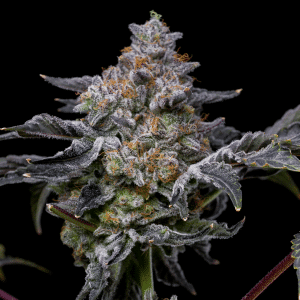Free Tropical Runtz seeds on orders over $150!
Have you heard of cannabis producers using molasses to increase the size of their buds? Because of the low cost and convenience, molasses or other sugars are commonly used in cannabis cultivation. Farmers use molasses to aid the growth of a variety of crops. Increased carbon dioxide for plant consumption, avoidance of salt accumulation and nutrient lockout, a decrease of insects, and ultimately 10-20% larger cannabis buds are just a few of the plant-specific benefits of utilizing molasses to cultivate cannabis.
Molasses is a dark, sweet, and syrupy material made from sugars derived from sources such as beets and sugarcane. During sugar manufacturing, these components are boiled down to become a thick, viscous substance. Molasses remains after the sugar crystals have been removed from the final product. Molasses is a crucial component in many organic cannabis farmers’ arsenals. This delicious, sticky fluid adds a lot of carbohydrates and nutrients to the growth medium, benefiting both the plants and the beneficial soil bacteria.
Additionally, what role does sugar play in cannabis? Sugar is essential for the healthy and vigorous development of cannabis plants. Sugar is involved in energy metabolism and serves as a form of chemical messenger aiding in the promotion of health throughout the cannabis life cycle. Cannabis produces and distributes sugars naturally, but it benefits from outside help in different methods and supplements.
Molasses are used as an organic pesticide as well. Insect bodies cannot digest sugar and die if they consume it.
Molasses enriches the soil and improves the growth environment, allowing your cannabis plants to produce larger buds. Sugar is broken down into carbohydrates in the soil, which feed beneficial bacteria. The soil bacteria then make CO2, which your plants utilize to flourish.
The use of artificial fertilizer causes salt buildup in your soil. If this isn’t addressed, the soil pH is thrown off, resulting in nutrient lockout in your cannabis plants.
This sticky syrup includes a variety of nutrients promoting plant growth and soil health, such as:
Molasses is a quick and straightforward way to improve your soil. It is also added to your growth media in two ways: either wet or dry.
To water your plants with molasses, follow these steps:
Dry molasses is a molasses-soaked mixture of grains. Here’s how to put dry molasses to use.
Compost tea with molasses harnesses the power of microbial life and essential nutrients. These solutions infuse plants with life-giving chemicals aiding plant health and disease defense. To increase the number of carbohydrates and yield-enhancing nutrients in your compost tea, add one teaspoon of unsulfured blackstrap molasses.
Foliar sprays supply nutrients and other elements to the leaves without going through the soil. This allows nutrients to enter straight through the epidermis and small stomata of the leaves (pores). This enables producers to treat any indicators of insufficiency quickly.
When it comes to molasses, there are several varieties to choose from.
This type of molasses is less rich and has a lighter color than the other alternatives. It’s prepared by boiling beet juice or sugar cane for the first time. When used in cooking, light molasses has a sweeter and more appealing than other options since it is less dark. Light molasses is commonly used in baked foods, marinades, and sauces.
Dark or “second” molasses have a darker color created by boiling sugar cane or beet juice twice. The black color comes from the higher quantity of carbs, and the is considerably stronger than light molasses.
This kind brings the richness and depth of molasses to a new level. It’s significantly less sweet and bitter than the others. Blackstrap molasses is thick and rich, and it’s frequently used in savory dishes like baked beans.
Sulfur dioxide is sometimes added to molasses by producers. This serves as a preservative and extends the product’s shelf life. This technique, however, alters the molasses and renders it unfit for use in the garden.
Treacle varies from molasses; it contains less sugar and is lighter in appearance. It’s sweeter than all other forms of molasses, but it’s also slightly bitter. However, treacle is made from boiling raw juice, much like molasses. The syrup is removed from the boil sooner in the procedure by the manufacturers.

Molasses contain many essential elements; they are needed by cannabis plants to grow and develop. It also feeds beneficial bacteria and fungus in the soil, which helps to bring it back to life. As a result, cannabis plants can access even more nutrients already present in the soil. What’s the best part? Molasses is a cheap yet powerful ingredient.





Offers
This product is not for use by or sale to persons under the age of 18. This product should be used only as directed on the label. It should not be used if you are pregnant or nursing. Consult with a physician before use if you have a serious medical condition or use prescription medications. A doctor’s advice should be sought before using any hemp products. All trademarks and copyrights are property of their respective owners and not affiliated with nor do they endorse this product. These statements have not been evaluated by the FDA. This product is not intended to diagnose, treat, cure or prevent any disease. By using this site you agree to follow the Privacy Policy and all Terms & Conditions printed on this site. All products contain less than 0.3% Cannabinoid-compliant with applicable Federal Laws. Please make yourself aware of any and all applicable laws regarding hemp in your jurisdiction. Premium Cultivars accepts no liability or responsibility regarding germination laws in any specific locale state or national jurisdictions.THCA products are not available for shipment to the following states: Hawaii, Idaho, Minnesota, Oregon, Rhode Island, Utah, Vermont *Note: Products with Total THC content above 0.3% must not be shipped to these states.
We want to help you get your hands on the seeds you want, take 20% off your next purchase when you enter your email below!
We want to help you get your hands on the seeds you want, take 20% off your next purchase when you enter your email below!